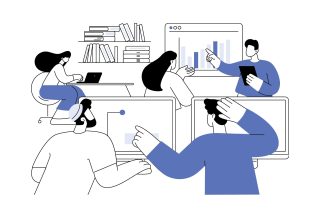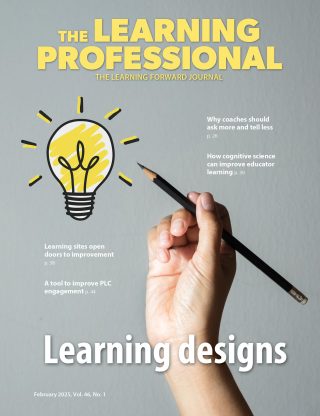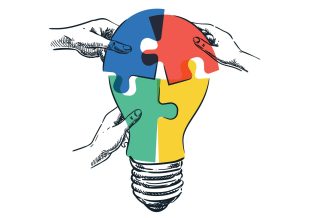FOCUS
Create A Vibrant Learning Culture
When teachers believe, students achieve
By Jenni Donohoo and Steven Katz
December 2017
Read the remaining content with membership access. Join or log in below to continue.
Sed ut perspiciatis unde omnis iste natus error sit voluptatem accusantium doloremque laudantium, totam rem aperiam, eaque ipsa quae ab illo inventore veritatis et quasi architecto beatae vitae dicta sunt explicabo. Nemo enim ipsam voluptatem quia voluptas sit aspernatur aut odit aut fugit, sed quia consequuntur magni dolores eos qui ratione voluptatem sequi nesciunt. Neque porro quisquam est, qui dolorem ipsum quia dolor sit amet, consectetur, adipisci velit, sed quia non numquam eius modi tempora incidunt ut labore et dolore magnam aliquam quaerat voluptatem.
References
Bandura, A. (1977). Self-efficacy: Toward a unifying theory of behavioral change. Psychological Review, 84(2), 191-215.
Bandura, A. (1986). Social foundations of thought and action: A social cognitive theory. Englewood Cliffs, NJ: Prentice-Hall.
Bandura, A. (1993). Perceived self-efficacy in cognitive development and functioning. Educational Psychologist, 28(2), 117-148.
Cantrell, S. & Callaway, P. (2008). High and low implementers of content literacy instruction: Portraits of teacher efficacy. Teaching and Teacher Education, 24(7), 1739-1750.
Donohoo, J. (2017). Collective efficacy: How educators’ beliefs impact student learning. Thousand Oaks, CA: Corwin.
Donohoo, J. & Velasco, M. (2016). The transformative power of collaborative inquiry: Realizing change in schools and classrooms. Thousand Oaks, CA: Corwin.
Duhigg, C. (2012). The power of habit: Why we do what we do in life and business. Toronto, Ontario, Canada: Doubleday Canada.
Eells, R. (2011). Meta-analysis of the relationship between collective efficacy and student achievement. Unpublished doctoral dissertation. Loyola University of Chicago.
Gallimore, R., Ermeling, B., Saunders, W., & Goldenberg, C. (2009). Moving the learning of teaching closer to practice: Teacher education implications of school-based inquiry teams. Elementary School Journal, 109(5), 537-553.
Georgiou, S., Christou, C., Stavrinides, P., & Panaoura, G. (2002). Teacher attributions of student failure and teacher behavior toward the failing student. Psychology in the Schools, 39(5), 583-595.
Gibbs, S. & Powell, B. (2011). Teacher efficacy and pupil behaviour: The structure of teachers’ individual and collective beliefs and their relationship with numbers of pupils excluded from school. British Journal of Educational Psychology, 82(4), 564-584.
Goddard, R., Goddard, Y., Kim, E., & Miller, R. (2015). A theoretical and empirical analysis of the roles of instructional leadership, teacher collaboration, and collective beliefs in support of student learning. American Journal of Education, 121(4), 501-530.
Goddard, R., Hoy, W., & Hoy, A.W. (2004). Collective efficacy beliefs: Theoretical developments, empirical evidence, and future directions. Educational Researcher, 33(3), 3-13.
Goddard, R., Hoy, W., & Hoy, A.W. (2000). Collective teacher efficacy: Its meaning, measure, and impact on student achievement. American Educational Research Journal, 37(2), 479-507.
Hattie, J. (2016, July). Keynote speech. Third Annual Visible Learning Conference: Mindframes and Maximizers. Washington, DC.
Hoy, W., Sweetland, S., & Smith, P. (2002). Toward an organizational model of achievement in high schools: The significance of collective efficacy. Educational Administration Quarterly, 38(1), 77-93.
Katz, S. & Dack, L.A. (2013). Intentional interruption: Breaking down learning barriers to transform professional practice. Thousand Oaks, CA: Corwin.
Katz, S., Dack, L.A., & Malloy, J. (2017). The intelligent, responsive leader. Thousand Oaks, CA: Corwin.
Katz, S., Earl, L., & Ben Jaafar, S. (2009). Building and connecting learning communities: The power of networks for school improvement. Thousand Oaks, CA: Corwin.
Parks, M., Solmon, M., & Lee, A. (2007). Understanding classroom teachers’ perceptions of integrating physical activity: A collective efficacy perspective. Journal of Research in Childhood Education, 21(3), 316-328.
Preus, J. (2011). Examining an inquiry-based approach for new teacher training. Dissertation, University of California.
Ramos, M., Silva, S., Pontes, F., Fernandez, A., & Nina, K. (2014). Collective teacher efficacy beliefs: A critical review of the literature. International Journal of Humanities and Social Science, 4(7), 179-188.
Rauf, P., Ali, S., Aluwi, A., & Noor, N. (2012). The effect of school culture on the management of professional development in secondary schools in Malaysia. Malaysian Online Journal of Educational Science, 2(3), 41-51.
Ross, J., Hogaboam-Gray, A., & Gray, P. (2004). Prior student achievement, collaborative school processes, and collective teacher efficacy. Leadership and Policy in Schools, 3(3), 163-188.
Sandoval, J., Challoo, L., & Kupczynski, L. (2011). The relationship between teachers’ collective efficacy and student achievement at economically disadvantaged middle school campuses. i-Manager’s Journal on Educational Psychology, 5(1), 9-23.
Tschannen-Moran, M. & Barr, M. (2004). Fostering student learning: The relationship of collective teacher efficacy and student achievement. Leadership and Policy in Schools, 3(3), 189-209.

Jenni Donohoo (jenni.donohoo@praxis-engage.com) is an educational consultant, author, and keynote speaker at Praxis Engaging Ideas.

Steven Katz (steven.katz@utoronto.ca) is a consultant, author, speaker, and professor in the Department of Applied Psychology & Human Development at the Ontario Institute for Studies in Education at the University of Toronto.
Recent Issues
BUILDING BRIDGES
December 2024
Students benefit when educators bridge the continuum of professional...
CURRICULUM-BASED PROFESSIONAL LEARNING
October 2024
High-quality curriculum requires skilled educators to put it into...
LEARNING TO PIVOT
August 2024
Sometimes new information and situations call for major change. This issue...
GLOBAL PERSPECTIVES
June 2024
What does professional learning look like around the world? This issue...












